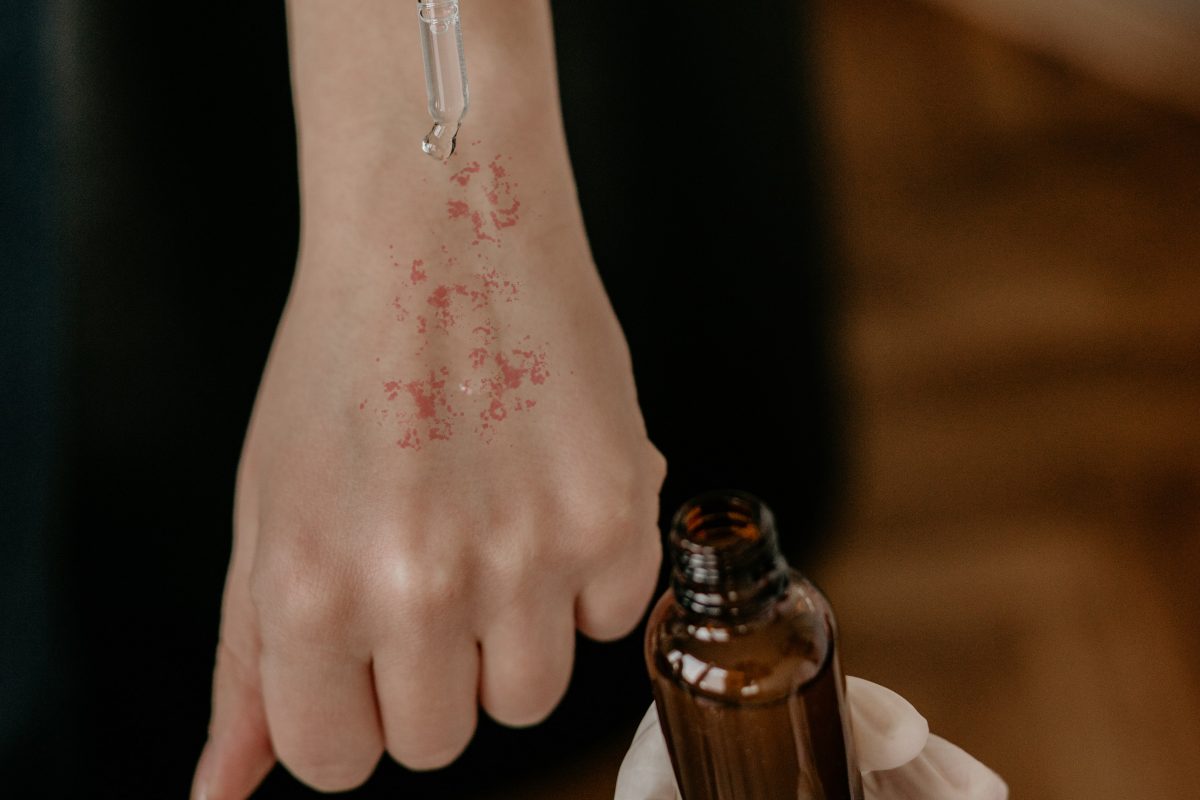
Skin Rash May Be a Symptom of COVID-19
Sally Robertson, B.Sc. via News-Medical Net – Researchers at King’s College London and Zoe Global Ltd have conducted a study suggesting that skin rashes could be valuable predictors of coronavirus disease 2019 (COVID-19).
In a large community-based study, 8.8% of people who had tested positive for severe acute respiratory syndrome coronavirus 2 (SARS-CoV-2) also reported having a skin rash. Among people who had not tested positive, but did report at least one classic symptom of COVID-19 symptom based on NHS guidelines, 8.2% also reported skin rashes.
According to NHS guidelines, the three most common signs of COVID-19 are fever, persistent cough, and a reduced sense of smell (anosmia).
Skin-related symptoms are not included, even though these can be easily spotted by patients, say Mario Falchi and team.
The researchers say their findings strongly support including skin rashes, adding that although skin rashes are far less common than fever, they are much more specific and last longer.
“Recognizing rashes is important in identifying new and earlier COVID-19 cases,” says the team.
A pre-print version of the paper is available on the server medRxiv*, while the article undergoes peer review.
The Link with Skin Manifestations Has Been Slow to Emerge
It has become apparent during the COVID-19 pandemic that while the disease is primarily a respiratory illness, it also targets multiple organs, including the skin.
Some studies have previously reported urticaria, chicken pox-like body rashes, and chilblains on the toes or fingers (acral rashes), possibly due to minor thrombotic events or damaged endothelium in small vessels of the digits.
However, the link between COVID-19 and skin manifestations has been slower to emerge than it has for organs such as the heart, intestine, and brain.
“COVID-19 rashes may present in many forms and at different stages of the disease. The heterogeneous presentations, the time delay, as well as the focus on severely ill patients during the early phases of the pandemic, led to the skin being overlooked as an important target organ for COVID-19,” say Falchi and colleagues.
Now the researchers have used data available for 336,847 UK users of the COVID Symptom Study app to investigate the diagnostic value of skin rashes for infection with severe acute respiratory syndrome coronavirus 2 (SARS-CoV-2). The team also used data available for 11,546 people who participated in an independent survey on COVID-19-related skin symptoms.
Skin Rashes Increased the Odds of SARS-CoV-2 Positivity More Than Fever
Of 27,157 app users who provided swab test results, 2,021 (7.4%) were positive for SARS-CoV-2, and 25,136 (92.6%) were negative.
Of the swab-positive individuals, 178 (8.8%) reported skin rashes (138 body rashes; 62 acral and 22 both body and acral), compared with 1357 (5.4%) of swab-negative individuals.
Association analysis showed that the presence of body or acral rashes increased the likelihood of being swab positive for SARS-CoV-2 by 67%. This compares with fever increasing the odds of SARS-CoV-2 positivity by 47%, and fever is commonly used to screen for COVID, points out the team.
Skin Rashes Were Also Predictive in Untested, But Symptomatic Users
Among the 334,690 app users who did not provide a swab test result, 17,371 reported one of the three main symptoms (fever, persistent cough, and anosmia), which according to NHS guidelines, would require isolation and SARS-CoV-2 testing.
Of those reporting one of the three typical symptoms, 8.2% also reported a skin rash, compared with 6% of untested users who did not report any of the three symptoms.
Association analysis revealed that among untested users who reported one of the three main symptoms, the likelihood of having a body rash was 46% greater compared with those who did not report one of the symptoms. The increased likelihood of acral rash among those reporting a symptom was not statistically significant.
The Findings Support the Inclusion of Skin Rashes as a Suspected Symptom
To capture more information about the type, duration, and timing of rashes, the team analyzed data available for people 11,546 with a rash who participated in an independent survey on COVID-19-related skin symptoms.
Among 694 responders who were positive for SARS-CoV-2 by swab or antibody test and provided information on COVID-19-related symptoms, the rash appeared before any other symptom in 17% of cases and in 21% of cases, the rash was the only symptom.
“Twenty-one percent of the SARS-CoV-2 positive surveyees presented with skin symptoms alone and would have been missed if using the NHS classic symptoms alone,” write Falchi and colleagues.
The researchers say the findings strongly support the inclusion of skin rashes as a suspected COVID-19 symptom.
“Although, it is less prevalent than fever, it is more specific of COVID-19 and last longer,” they add.
“An increased awareness from the public and healthcare professionals regarding COVID-19 skin changes will allow more efficient identification of new and earlier clusters of the disease,” concludes the team.
*Important Notice
medRxiv publishes preliminary scientific reports that are not peer-reviewed and, therefore, should not be regarded as conclusive, guide clinical practice/health-related behavior, or treated as established information.
To read the original article click here.






